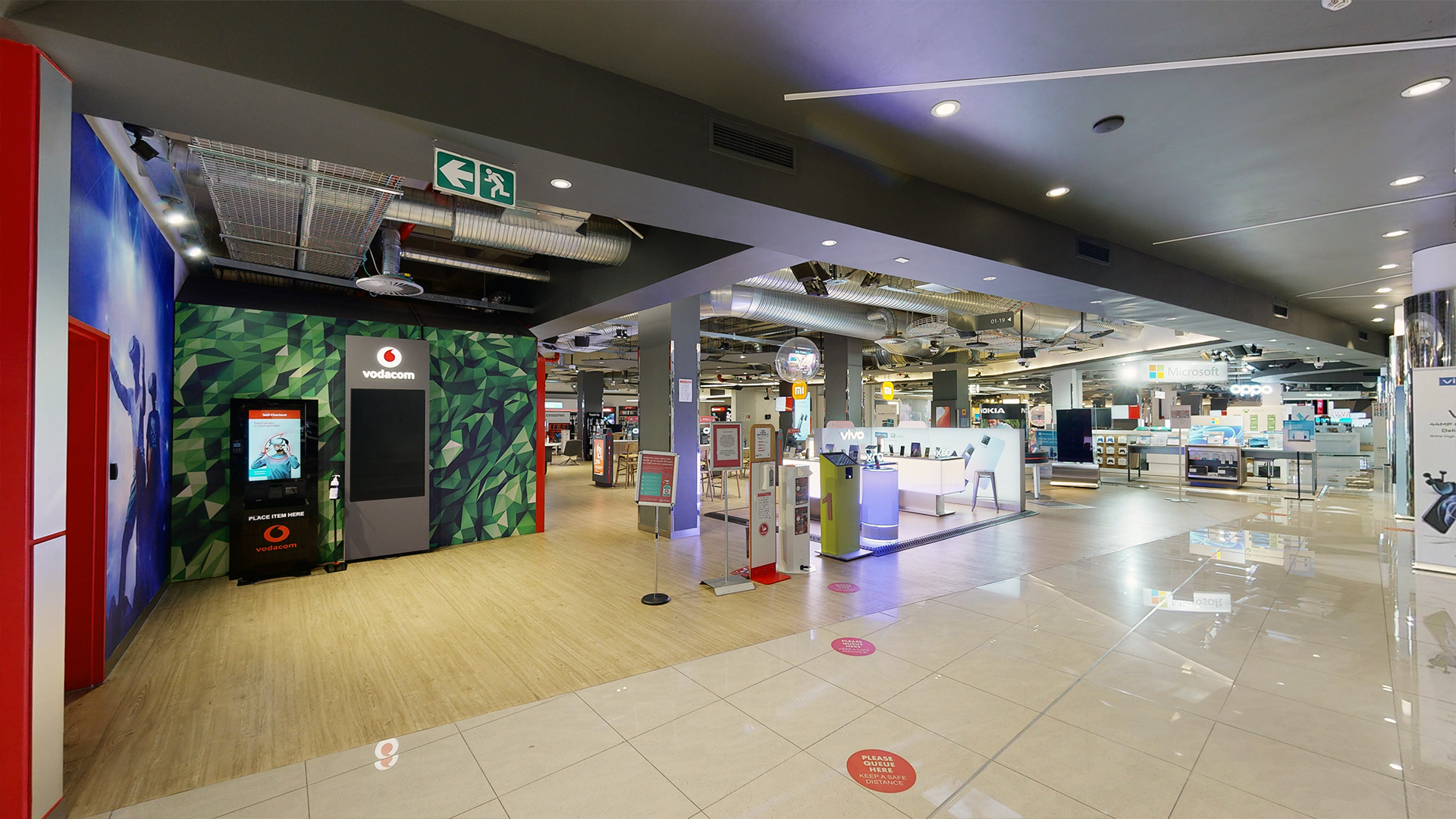The retail industry is undergoing a digital transformation, with virtual tours emerging as a game-changing tool for businesses. The creation of a virtual tour for the Vodacom World Mall in South Africa, using the advanced Matterport scanner, is a prime example of this technological evolution. This article will explore the myriad benefits that virtual tours bring to the retail sector, offering insights into how they enhance customer experience, drive sales, and offer a competitive edge.
Virtual Tour in the Retail
The Rise of Virtual Tours in Retail
Virtual tours have become increasingly popular in retail, especially in the wake of technological advancements and changing consumer behaviors. The Vodacom World Mall virtual tour serves as a pioneering example, demonstrating how retail spaces can be transformed into immersive, digital experiences. These tours allow customers to explore stores in vivid detail, providing a unique shopping experience that bridges the gap between physical and digital realms.
Key Advantages of Virtual Tours in Retail
- Enhanced Customer Engagement: Virtual tours offer a level of interactivity and immersion that traditional online shopping cannot match. They allow customers to explore stores in a more engaging and detailed manner, leading to increased interest and longer engagement times.
- Wider Accessibility and Reach: With a virtual tour, geographical barriers are eliminated. Customers from anywhere can explore stores like the Vodacom World Mall, expanding the store’s reach and opening up new market opportunities.
- Improved Understanding of Products and Layout: High-resolution imagery and 3D views in virtual tours enable customers to gain a better understanding of products and store layouts, aiding in their purchase decisions.
- Cost-Effective Marketing Tool: Once created, a virtual tour can be a long-term asset, providing ongoing marketing benefits without the need for continuous investment.
- Valuable Analytics and Data: Integrating virtual tours with analytics tools can yield insights into customer preferences and behaviors, helping retailers tailor their offerings and strategies more effectively.
- Staying Ahead of the Competition: By adopting virtual tours, retailers can distinguish themselves in a crowded market. This technological embrace not only attracts modern consumers but also positions the brand as innovative and customer-focused.
The Technical Process: Utilizing Matterport Technology
Creating a high-quality virtual tour, like that of the Vodacom World Mall, involves sophisticated technology. The Matterport scanner is particularly effective, offering detailed spatial mapping and high-resolution imaging. This technology ensures that the virtual representation is as close to reality as possible, offering an authentic experience to online visitors.
Impact on Customer Experience and Business Growth
Virtual tours have shown a positive impact on both customer experience and business growth. Customers enjoy a more informative and enjoyable shopping experience, while businesses benefit from increased engagement and potential sales growth. Retailers report higher inquiry rates and greater brand visibility as a result of implementing virtual tours.
The Future of Virtual Tours in Retail
The future of virtual tours in retail looks promising, with potential advancements like virtual reality integration, real-time product information, and enhanced interactivity. These innovations could further transform the shopping experience, making it more personalized and engaging.
Virtual tours are revolutionizing the retail industry, offering a plethora of benefits ranging from increased customer engagement to expanded market reach. The example of the Vodacom World Mall virtual tour illustrates the potential of this technology to transform traditional retail spaces into dynamic, digital experiences. As the retail world continues to evolve, the integration of virtual tours will likely become a standard, offering customers an innovative way to shop and retailers a powerful tool to grow their business.

